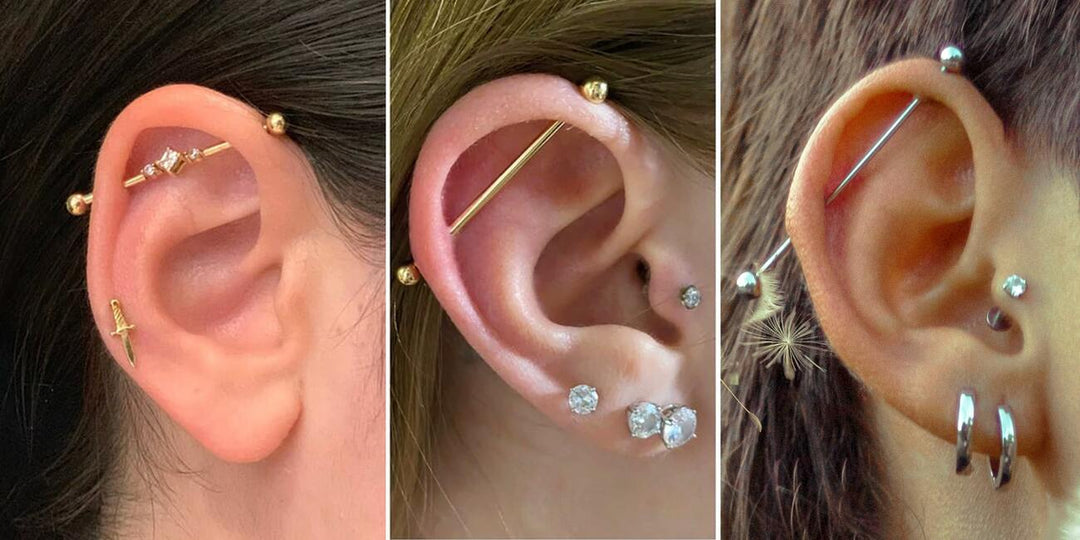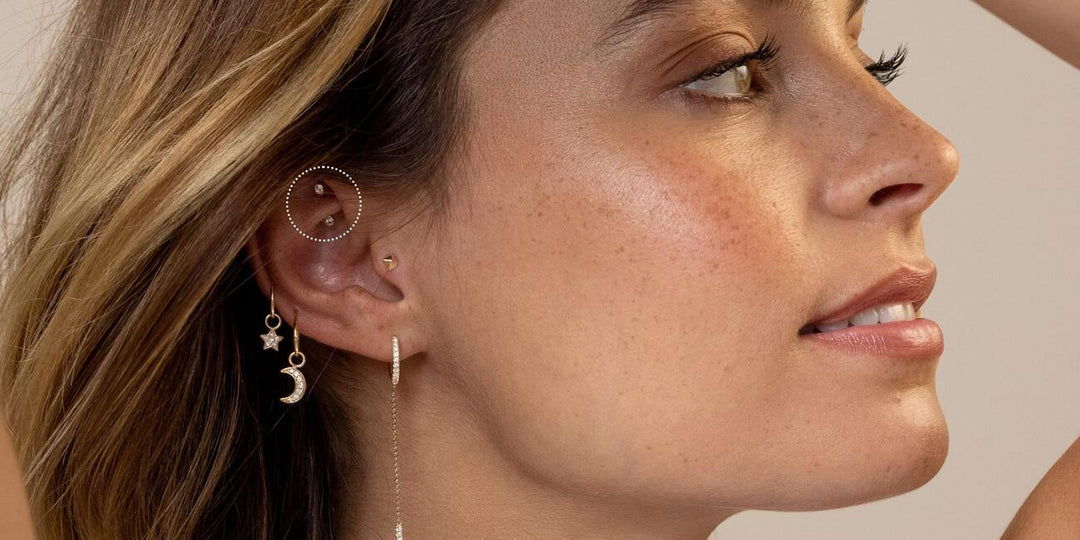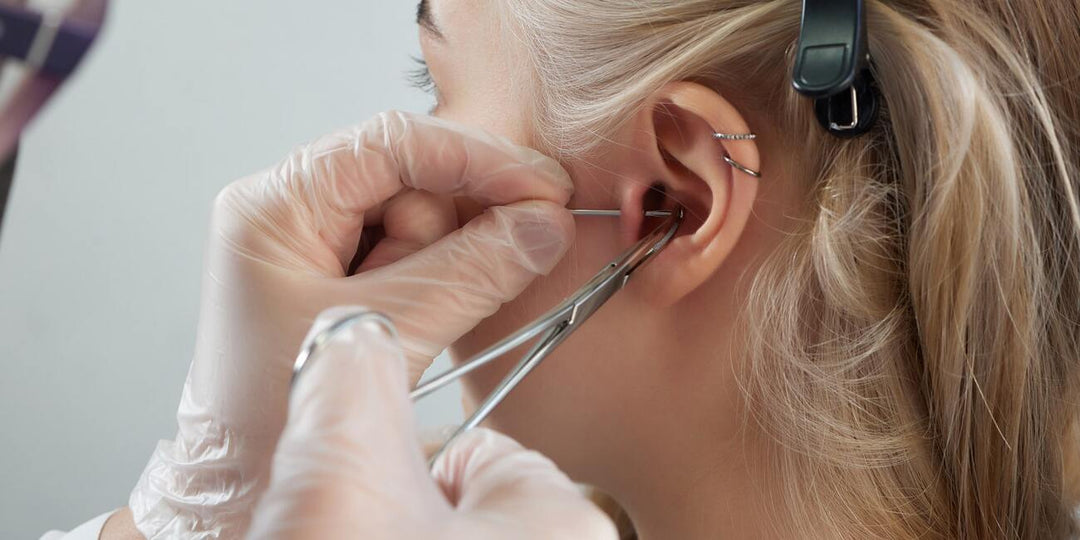The Helix Piercing: Everything You Need To Know
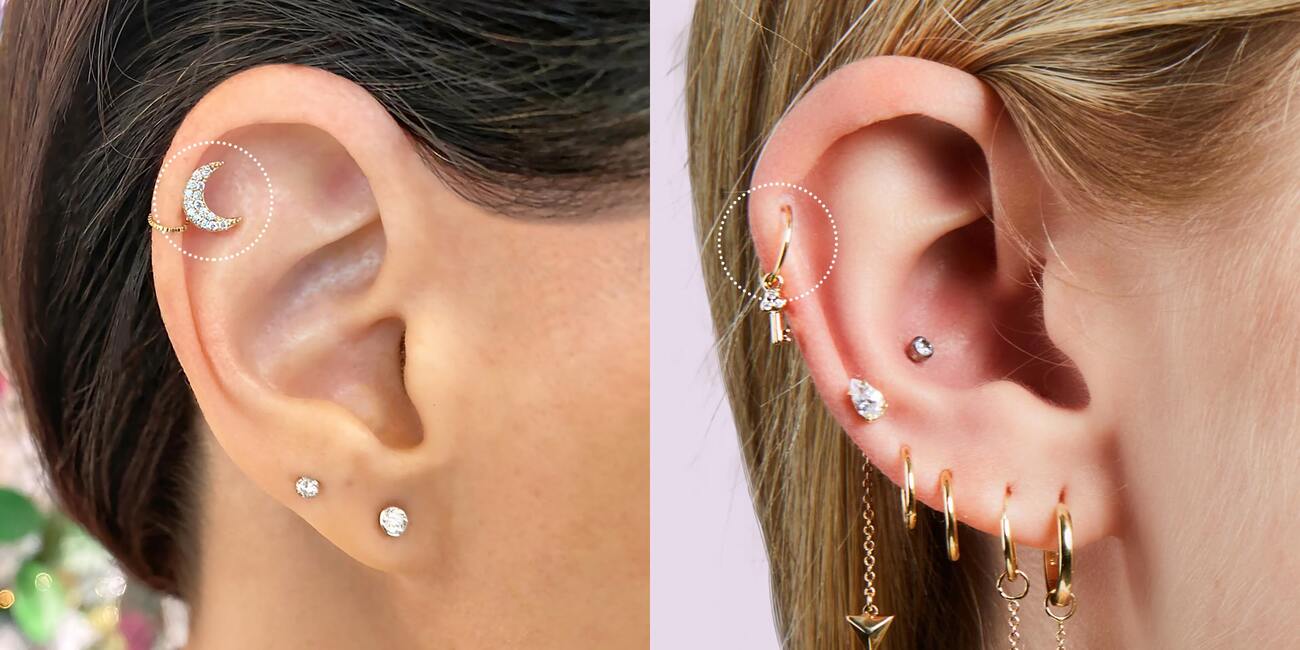

The widely popular helix piercing is probably what you think of when you think of a cartilage piercing. Located in the upper cartilage of the ear, it’s easy to confuse the helix piercing for other piercing types, like the auricle or conch cartilage piercings.
Since your upper cartilage offers a big playground for piercings, you need to think long and hard about where you want your helix piercing located before visiting your piercer. Your piercer will be able to provide guidance, but the main determining factor of helix piercing location is your personal preference, so ultimately, it’s up to you.
While ear piercings, in general, tend to have relatively easy healing times, cartilage heals differently than softer skin, so you need to make sure that you’re doing everything right to avoid complications. The cartilage of the ear, in particular, can become susceptible to unique scarring, and in extreme cases, damage caused by a cartilage piercing can lead to permanent disfigurement of the ear, such as cauliflower ear.
Don’t let this scare you from this super cute piercing! Here’s all that you need to know about the helix piercing.
Does A Helix Piercing Hurt
Cartilage piercings generally fall low on the pain scale. It will depend on the specific location of the helix piercing, however, you shouldn’t feel more than a slight pinch. Since the cartilage in the helix piercing area is so thin, the piercing process goes quickly.
For a few days after piercing, you’ll feel some throbbing and see swelling and slight bleeding. In moderation, these symptoms are normal. If you experience these in excess, consult a medical professional.
Cartilage piercings are susceptible to complications like cartilage bumps, so it’s important to watch your piercing as it heals and refrain from moving the jewelry. Cartilage heals differently than soft skin, and it can be easily damaged during healing.
Helix Piercing Healing Time
Cartilage piercings vary in healing times more than other piercings. Expect a healing time of 3 - 6 months. Since everyone is different, and the helix has a wide range of healing times, you should talk to your piercer before changing your jewelry or stopping aftercare practices.
Aftercare Rules
Because of the complications that can arise during healing, the helix piercing requires special practices to avoid things like cartilage bumps or scarring. Here are some things to keep in mind as you heal.
- Be careful as you clean. As with any healing piercing, you should conduct a salt bath or saline soak 2 - 3 times a day. However, with a helix piercing, be extra careful not to move the jewelry too much as you clean it. Moving the jewelry can cause damage to the surrounding skin, leading to bumpy scars. Carefully hold a saline-soaked cotton ball to your piercing and keep it still for the 3 - 5 minutes of the soak. Once the soak is complete, carefully dab the area dry with a paper towel.
- Keep the piercing dry. Every new piercing needs to stay away from dampness, but it’s especially important with cartilage piercings. Bacteria are drawn to dampness, and if you’re not careful to fully dry the piercing after it's been exposed to liquid, it could become infected. Cartilage infections can lead to cartilage bumps, which are difficult to get rid of once they appear. Some cartilage bumps can go away on their own, but many will have to be surgically removed, often leading to other types of scarring.
- Don’t move the jewelry. Cartilage damage tends to be more noticeable than skin damage in other areas of the body. While any piercing can see skin trauma from moving the jewelry around too much, cartilage piercings are less forgiving. When cleaning your new helix piercing, be extra careful not to move the jewelry. Do your best to refrain from sleeping on the jewelry, and stay away from hats or other head gear that might touch or move the jewelry during healing. It’s a good idea to choose a cartilage stud for your initial jewelry to avoid jewelry movement.
- Use clean pillows. You don’t want to know how much bacteria, dead skin, and other nasty things reside in your pillows. Take our word for it; you’ll want to consider buying a new pillow to use during healing. Additionally, change your pillowcase nightly to ensure cleanliness. If you don’t want to continuously launder your pillowcases, you can cover your pillow in a clean t-shirt every night.
Helix Piercing Jewelry
Now that we’ve sufficiently scared you into proper aftercare practices, it’s time to dream about the jewelry you’ll wear after healing.
The helix piercing allows for endless individuality; the location of the helix piercing allows for tons of adorable jewelry styles.
A simple stud is a cute, subtle way to decorate your helix piercing. Small gemstones add a sparkly flair to the top of your ear, dazzling without being too loud. You can also show off your personality with super cute charms. You can opt for a flat disc back for a less noticeable backing, or you can choose a ball back if you’d like to decorate both sides of the ear.
Captive bead rings also look fantastic in the helix piercing. The combination of the hoop and the bead combines the best of both worlds. You can opt for a simple metal bead or choose colorful bead options like opals, Baltic amber, or even pearls.
Helix hoop earrings are among the most popular helix jewelry styles. Seamless hoops are great for a sleek, simple look. Many who have multiple ear piercings opt for this style because they complement the surrounding jewelry without overwhelming the ear. Clickers and segment rings also offer a seamless aesthetic in a jewelry style that’s a little easier to insert into the ear.
Curved and circular barbells are also a fantastic option for the helix piercing. These styles seem to be common with those who have multiple bead jewelry styles in their ears.
Ear cuffs are unique to cartilage piercings. They wrap around the ear, offering a style similar to the hoop, but they are often thicker and more intricate than hoops are.
Cartilage shields are larger pieces of jewelry that tend to be the focus of your ear jewelry. These stunning pieces dangle from the side of the ear, shielding a large portion of your cartilage.
Why Shouldn’t I Get A Helix Piercing?
We’ve talked in length about cartilage bumps and potential scarring when it comes to the helix piercing. Keloids are one of the bumps to be aware of. Keloid scars can form anywhere that tissue has been damaged, but they tend to show up more often with cartilage damage. They are largely a genetic issue, and unfortunately, if you develop a keloid, it will have to be surgically removed, and chances are that you will always have a scar. If you are genetically predisposed toward keloids, then the helix piercing is not for you. Be sure to consult a doctor before you receive any piercing; it’s possible that you might develop keloids no matter where you want to get pierced.
If you have little self control when it comes to sub-consciously messing with new jewelry, then you should probably think twice about getting a cartilage piercing. Cartilage is more easily damaged, and you do not want to touch your jewelry as it heals.
Helix Piercing Cost
You will most likely spend around $40 - $50 on your helix piercing. If you go to a store with a piercing gun, the price will probably be around $20, however, DO NOT DO THIS.
You should never go to a piercer who uses a piercing gun for any piercing. For cartilage piercings, you should never, ever, ever, ever opt for a piercing gun. Issues like cauliflower ear are caused by blunt force trauma to the cartilage. A piercing gun works by forcing jewelry through the skin, which is the very definition to blunt force trauma. Additionally, piercing guns harbor more bacteria than needles do. If you want your cartilage to heal happily, you must use a needle.
Helix Piercing Variations
As if there weren’t enough ways to individualize your helix piercing, the upper cartilage offers plenty of space for helix piercing variations.
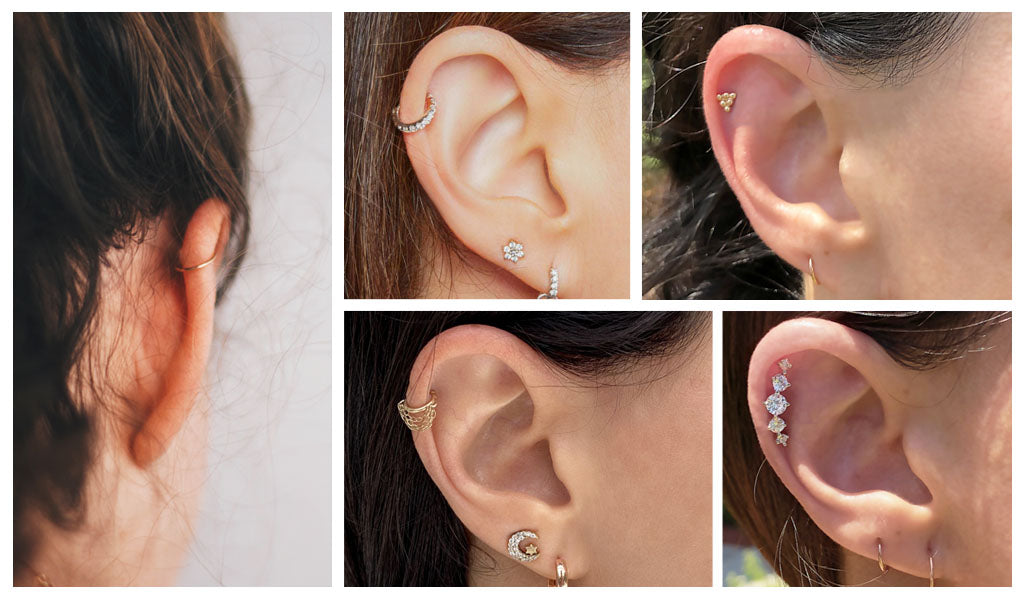

- The forward helix is placed in the upper cartilage where your ear curves right before it connects with your temple. The forward helix commonly sports cartilage studs with small charms or gemstones. It looks amazing combined with other helix piercing styles to create a chain of jewelry that lines the outer ear.
- The double, triple, or even quadruple helix piercing is also very common. As you can probably guess from the name, these types consist of multiple helix piercings along the ear. Some people like to combine multiple helix piercings with auricle, upper lobe, and forward helix piercings to create a long chain of jewelry that goes the length of the ear. There’s little limit to however many piercings you want along your cartilage; just make sure that there’s enough space between the jewelry to safely change your jewelry and keep the integrity of the ear. If you want multiple piercings, it’s a good idea to get each piercing one-by-one so that you only have to worry about healing one piercing at a time.










